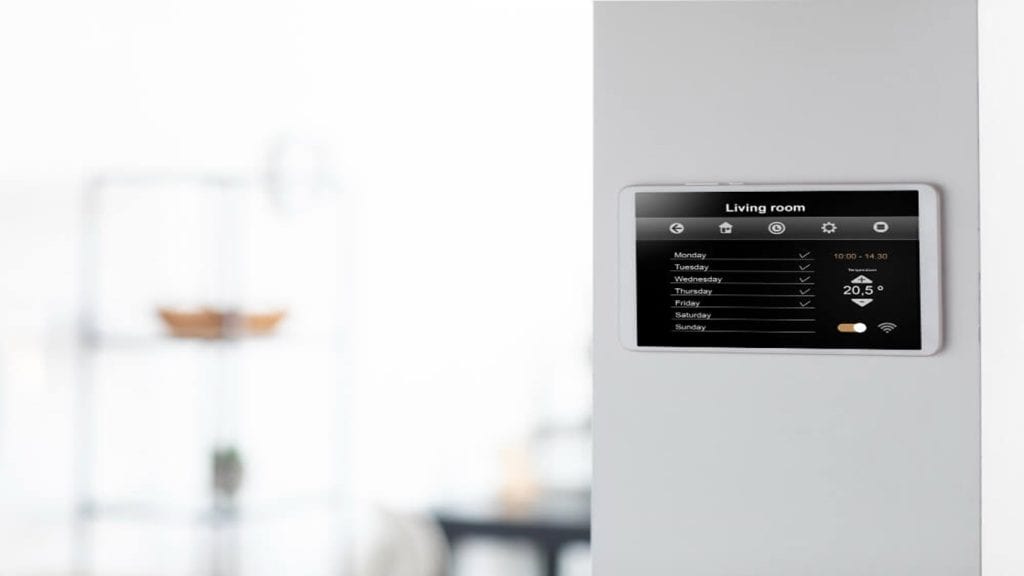
Did you know that underfloor heating can be operated at several temperatures? Here you will learn how to control the temperature for water underfloor heating.
Underfloor heating is a discreet radiant floor heating system that evenly distributes heat throughout the home, depending on the room it is added to. However, many homeowners are unsure as to what temperature should underfloor heating be set at? In this article, we will answer all questions related to what temperature should underfloor heating water be set at, by exploring the best temperatures for efficiency, and suitability across different types of flooring.
Key points:
- Discover the best temperatures for various flooring types.
- Learn about the energy efficiency of wet vs. electric systems.
- Installation tips for maximising underfloor heating benefits.
- Key considerations for choosing the right underfloor heating.
- How to maintain and service your heating system effectively.
- How Does Underfloor Heating Work?
- What Temperature Should Underfloor Heating Be Set At?
- Underfloor Heating Controls
- Underfloor Heating Heat Output
- Why Use Insulation For Underfloor Heating?
- Best Flooring Types for Underfloor Heating
- Vinyl and Laminate Floors
- Tile and Stone Floors
- Carpet Flooring
- Wood Flooring
- Thermostat Settings and Air Temperature Control
- Room-by-Room Control
- General Guidelines for Underfloor Heating Temperatures
- Maximum Temperature Limits
- Heating Up Times
- FAQs
How Does Underfloor Heating Work?
There are two primary types of underfloor heating: electric and wet (or hydronic).
Each has its own method of heat distribution, but both aim to provide a consistent, even temperature across your floors.
- Electric Underfloor Heating: Electric underfloor heating systems utilise ultra-thin wires installed beneath the flooring. These wires heat up and transfer warmth directly to the floor above. This type of underfloor heating is particularly suited for quick installations and smaller areas due to its straightforward layout.
- Wet Underfloor Heating: Wet underfloor heating systems involve a network of pipes laid under the floor that circulate warm water heated by your home’s central heating system. This could be from various sources like biomass boilers, heat pumps, or standard boilers. The water temperature should ideally be controlled to optimise energy use, focusing on what temperature underfloor heating water should be set at to balance comfort and efficiency.
What Temperature Should Underfloor Heating Be Set At?
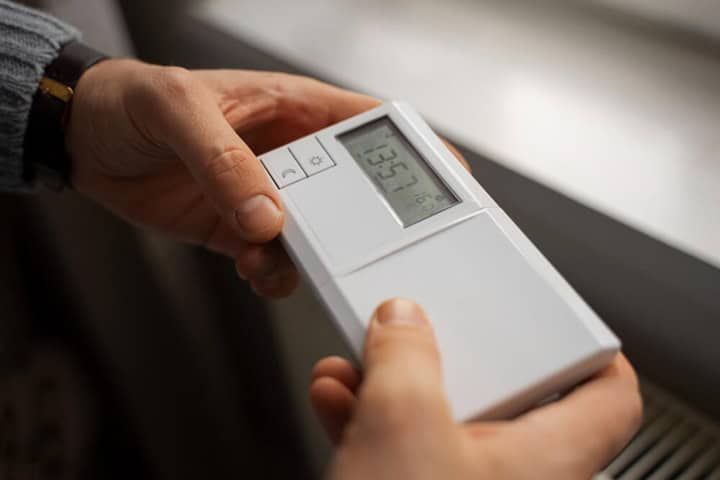
The question of what temperature should underfloor heating be set at is crucial in ensuring that it operates correctly and efficiently.. Generally, the optimal floor temperature is between 23°C and 32°C, which comfortably warms without overheating the space. It’s important to consider what is the maximum temperature for underfloor heating for each floor type to avoid damage. For instance, wooden floors are particularly sensitive to higher temperatures.
Underfloor Heating Controls
Modern thermostats play a pivotal role in managing underfloor heating efficiently.
With programmable options, you can set your heating to activate at different times of the day, adapting to your schedule and reducing energy waste. Underfloor heating settings should be adjusted according to the specific needs of the area being heated, considering factors like room size and insulation quality.
Underfloor Heating Heat Output
Maximising the efficiency of your underfloor heating system involves understanding the balance between heat output and energy consumption. Knowing how to manage underfloor heating settings can lead to a more comfortable and cost-effective home environment.
How to Calculate Heat Output:
Underfloor heating systems, whether electric or water-based, use heat output measurements that are somewhat similar to those used for radiators but are calculated based on the specific characteristics of underfloor heating.
For instance, while radiators use British Thermal Units (BTUs), underfloor heating considerations might focus more directly on the wattage per square metre necessary to heat a space efficiently, taking into account the underfloor heating water temperature and the floor size.
Why Use Insulation For Underfloor Heating?
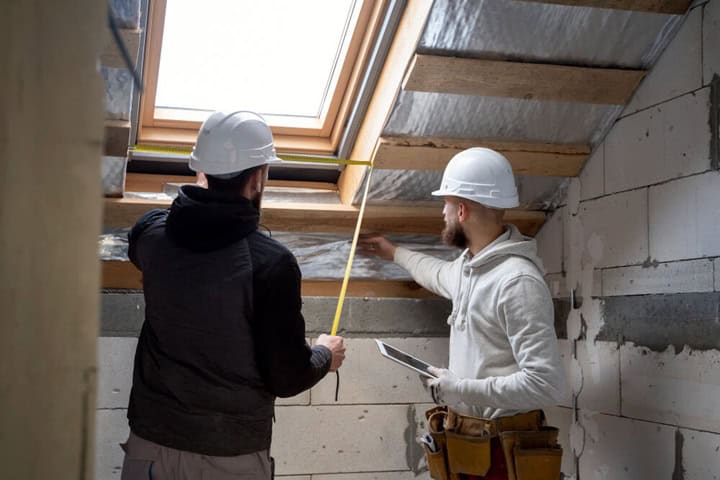
To ensure the effectiveness of an underfloor heating system, proper insulation boards beneath the system will aid in prioritising heat and performance.
Insulation not only increases the heat output but also reduces heat loss, which in turn minimises the running costs. Effective insulation acts as a barrier that directs the heat upwards into the room rather than allowing it to dissipate downwards into the subfloor.
Best Flooring Types for Underfloor Heating
The effectiveness of underfloor heating can also depend heavily on the type of flooring under which it is installed. Materials like stone, ceramic, and engineered wood, known for their good thermal conductivity, are ideal for maximising the system’s efficiency.
Other Compatible Flooring Options:
- Carpet: Ensure it has a tog rating of no more than 2.5 to allow heat to pass through effectively.
- Vinyl and Laminate: These should be specifically designed to handle the heat output from underfloor heating systems.
- Linoleum and Resin: Also suitable options, provided they are installed correctly with underfloor heating in mind.
Vinyl and Laminate Floors
When considering what temperature underfloor heating should be set at for vinyl or laminate floors, it’s essential to prevent the surface temperature from exceeding 27°C. This precaution helps avoid any potential damage to the flooring due to excessive heat.
For such installations, using a subfloor of concrete, solid screed, or WBP (Weather and Boil Proof) plywood ensures that the heating is both safe and effective. The specific underfloor heating settings for these floors involve using either loose cable systems or mat systems ranging from 100W to 200W, ensuring even distribution of heat without hotspots.
Tile and Stone Floors
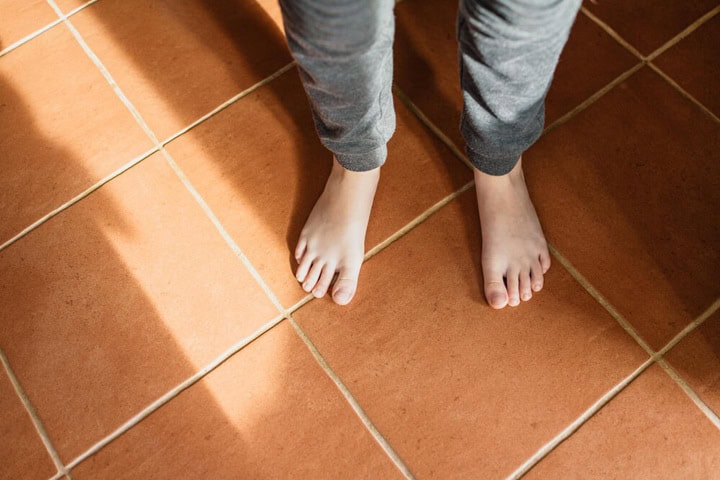
The robust nature of tile and stone makes them ideal for higher temperature settings, with an underfloor heating temperature typically set up to 29°C. For this type of flooring, electric underfloor heating is the best option since it will warm up quicker and is less likely to damage the tile flooring materials.
This temperature range leverages the excellent thermal conductivity of these materials, allowing them to store and radiate heat more effectively than other types of flooring. This feature is particularly advantageous in both new builds and old properties where long-term efficiency and durability are desired.
Setting the underfloor heating water temperature correctly for these materials ensures that the system operates efficiently, maximising comfort without wasting energy.
Carpet Flooring
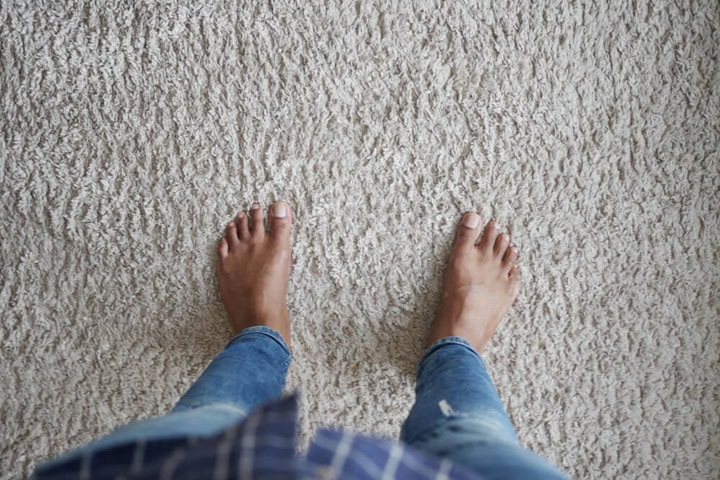
Carpet and underlay typically provide insulation which can impact the efficiency of underfloor heating systems.
As mentioned, to combat this, it’s recommended to use carpets with a tog rating of no more than 2.5. This ensures that the heat can penetrate through effectively without being trapped underneath the carpet. The ideal underfloor heating temperature for carpeted floors should not exceed 27°C to prevent overheating and to maintain energy efficiency. But rug or carpet – which is better for underfloor heating?
Wood Flooring

Similar to laminate and vinyl flooring, wooden floors are sensitive to changes in temperature, which can cause expansion and contraction.
To prevent potential damage, it is advised that the underfloor heating temperature for wood flooring also does not surpass 27°C. Engineered hardwood and laminate are preferable choices over solid parquet wood flooring because they handle temperature changes better.
An essential addition to any underfloor heating system under wood floors is a vapour barrier to help manage moisture and heat distribution.
Thermostat Settings and Air Temperature Control
The core of managing an underfloor heating system efficiently lies in the proper use of thermostats. Programmable and smart WiFi thermostat heating controls allow for precise temperature control and can be adjusted remotely, enhancing convenience and reducing wastage of energy. For better results, the underfloor heating settings should be adjusted to maintain a floor temperature typically between 21°C and 25°C depending on personal comfort levels and the specific requirements of the space.
Room-by-Room Control
Installing individual thermostats in different rooms allows for more specific temperature control, ensuring that each area is heated to its ideal temperature without unnecessary energy use. This setup is particularly beneficial in houses where room usage and insulation vary significantly. You can also integrate multi-zone heating so that you can control heating from different rooms.
General Guidelines for Underfloor Heating Temperatures
The actual heat output needed to reach your desired temperature might be approximately double the floor temperature setting due to the nature of how underfloor heating distributes heat.
For example, setting the thermostat at 22°C might require the system to operate at a higher temperature initially to achieve and maintain this level throughout the room.
Maximum Temperature Limits
The maximum temperature for underfloor heating systems is typically set based on the flooring type to avoid damage.
For instance, while tile and stone can handle up to 29°C, sensitive materials like wood and vinyl should be limited to 27°C. The flow temperatures in the pipes for a wet system will range from 35°C to 55°C, depending on the installation and floor covering.
Heating Up Times
The time it takes for underfloor heating systems to warm up can vary. Electric systems are quicker, heating up within 30 to 60 minutes, whereas water-based systems might take 2 to 3 hours. This is due to the thermal mass of the screed or substrate that needs to be heated first. Utilising a smart thermostat can help manage these times efficiently by preheating the space before it’s needed, ensuring the area is warm when required and conserving energy when it’s not.
In conclusion, efficiently managing your underfloor heating system starts with selecting the right temperature settings for different flooring types and ensuring proper insulation. By using programmable or smart thermostats, you can precisely control heat distribution, maximising comfort while minimising energy usage.
Want to know more about heating in a general sense? Why not try our article on what temperature should central heating thermostats be set at…
FAQs
What is the most efficient way to run wet underfloor heating?
The most efficient way to run wet underfloor heating is by using a low-temperature, continuous operation during colder months. This method maintains a consistent temperature, reducing the energy required for frequent temperature fluctuations.
What is the most efficient setting for underfloor heating?
The most efficient setting for underfloor heating is typically between 18°C and 22°C (64°F and 72°F). It’s advisable to use a programmable thermostat to adjust temperatures automatically according to daily and seasonal needs.
What is the best water temperature for in-floor heat?
The best water temperature for in-floor heating generally ranges from 30°C to 45°C (86°F to 113°F). This temperature range efficiently heats the space without overheating, ensuring comfortable ambient temperatures and optimal energy use.
Sources
Yalong Wood. (2020) What is WBP Plywood? [online] Available at: https://www.yalongwood.com/what-is-wbp-plywood/ [accessed 15/10/2024]
Eco Home Essentials. (2021) Vapour Barrier or Vapour Control Layer? [online] Available at: https://www.eco-home-essentials.co.uk/vapour-barrier.html [accessed 15/10/2024]
